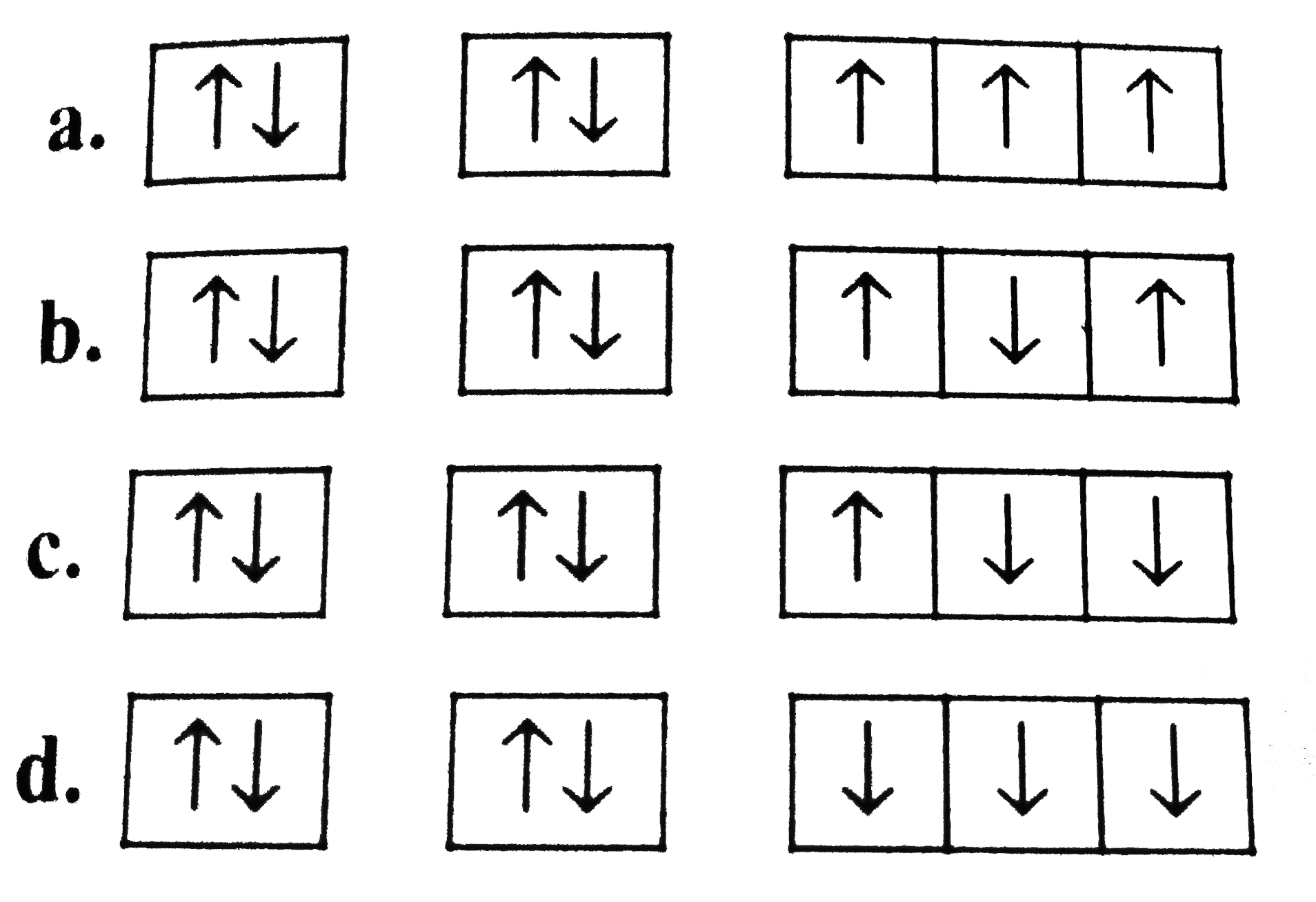The first loinsatisation in electron volts of nitrogen and oxygen atoms are respectively , given by
The correct Answer is:A
To determine the first ionization energies of nitrogen and oxygen, we need to analyze their electronic configurations and the stability of their outermost electrons.
1. Identify the Atomic Numbers:
- Nitrogen (N) has an atomic number of 7, meaning it has 7 electrons.
- Oxygen (O) has an atomic number of 8, meaning it has 8 electrons.
2. Write the Electronic Configurations:
- For Nitrogen: The electronic configuration is 1s22s22p3.
- For Oxygen: The electronic configuration is 1s22s22p4.
3. Analyze the Outermost Electrons:
- Nitrogen has 5 electrons in its outer shell (2 in 2s and 3 in 2p), while oxygen has 6 electrons in its outer shell (2 in 2s and 4 in 2p).
- The outermost electrons for nitrogen are in a half-filled p subshell (2p^3), which is more stable due to symmetry and exchange energy.
4. Stability Consideration:
- Half-filled subshells (like nitrogen's 2p^3) are more stable than those that are not half-filled (like oxygen's 2p^4). This means that it requires more energy to remove an electron from nitrogen than from oxygen.
5. Conclusion on Ionization Energies:
- Therefore, the first ionization energy of nitrogen is greater than that of oxygen:
First Ionization Energy of N>First Ionization Energy of O
6. Select the Correct Option:
- Based on the analysis, we can conclude that option A (where the first ionization energy of nitrogen is greater than that of oxygen) is the correct answer.
- Nitrogen (N) has an atomic number of 7, meaning it has 7 electrons.
- Oxygen (O) has an atomic number of 8, meaning it has 8 electrons.
- For Nitrogen: The electronic configuration is 1s22s22p3.
- For Oxygen: The electronic configuration is 1s22s22p4.
- Nitrogen has 5 electrons in its outer shell (2 in 2s and 3 in 2p), while oxygen has 6 electrons in its outer shell (2 in 2s and 4 in 2p).
- The outermost electrons for nitrogen are in a half-filled p subshell (2p^3), which is more stable due to symmetry and exchange energy.
- Half-filled subshells (like nitrogen's 2p^3) are more stable than those that are not half-filled (like oxygen's 2p^4). This means that it requires more energy to remove an electron from nitrogen than from oxygen.
- Therefore, the first ionization energy of nitrogen is greater than that of oxygen:
First Ionization Energy of N>First Ionization Energy of O
- Based on the analysis, we can conclude that option A (where the first ionization energy of nitrogen is greater than that of oxygen) is the correct answer.
Topper's Solved these Questions
- ATOMIC STRUCTUREBOOK - CENGAGE CHEMISTRY ENGLISHCHAPTER - ATOMIC STRUCTUREEXERCISE - Exercises Assertion And Reason
21 Videos
- ATOMIC STRUCTUREBOOK - CENGAGE CHEMISTRY ENGLISHCHAPTER - ATOMIC STRUCTUREEXERCISE - Exercises Integer
11 Videos
- ATOMIC STRUCTUREBOOK - CENGAGE CHEMISTRY ENGLISHCHAPTER - ATOMIC STRUCTUREEXERCISE - Exercises Multiple Correct
45 Videos
- APPENDIX - INORGANIC VOLUME 1BOOK - CENGAGE CHEMISTRY ENGLISHCHAPTER - APPENDIX - INORGANIC VOLUME 1EXERCISE - chapter-7 Single correct answer
1 Videos
- CHEMICAL BONDING AND MOLECULAR STRUCTUREBOOK - CENGAGE CHEMISTRY ENGLISHCHAPTER - CHEMICAL BONDING AND MOLECULAR STRUCTUREEXERCISE - Archives Subjective
15 Videos
Similar Questions
Knowledge Check
The ionisation energy of nitrogen is more than that of oxygen because
AExtra stability of half filled orbitalsBMore number of energy levelsCLess number of valence electronsDSmaller sizeNitrogen dioxide is reduced to nitrogen and oxygen in presence of finely divided :
ACalciumBPotassiumCPlatinumDCarbonGround state electronic configuration of nitrogen atom can be represented by
A B
B C
C D
D
1 electron volt is equal to
View SolutionElectron volt is the unit of
View SolutionThe value in electron-volt per atom which represent the first ionisation energy of oxygen and nitrogen atom respectively are
View SolutionThe number of paired electrons in oxygen atom is :
View SolutionThe ground state electronic configeration of nitrogen atom can be represented by

View Solution
